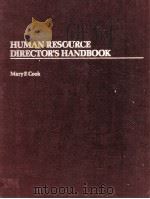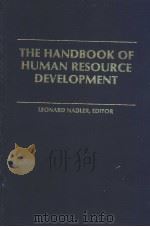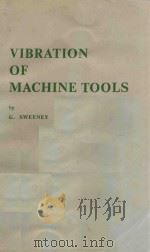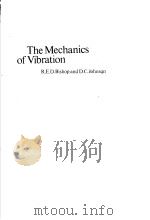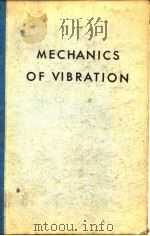《handbook of human vibration P988》
| 作者 | 编者 |
|---|---|
| 出版 | 未查询到或未知 |
| 参考页数 | |
| 出版时间 | 没有确切时间的资料 目录预览 |
| ISBN号 | 无 — 求助条款 |
| PDF编号 | 820575868(仅供预览,未存储实际文件) |
| 求助格式 | 扫描PDF(若分多册发行,每次仅能受理1册) |
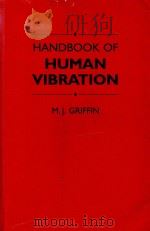
Chapter 1Vibration and Human Responses1
1.1 Introduction1
1.2 Categorization of Vibration3
1.3 Effects of Vibration15
1.4 Methods of Human Vibration Research17
1.5 Summary25
Chapter 2An Introduction to Whole-body Vibration27
2.1 Introduction27
2.2 Some General Observations29
2.3 Effects of Whole-body Vibration32
2.4 Vibration Axes33
2.5 Frequencies of Whole-body Vibration36
2.6 Magnitudes of Whole-body Vibration38
2.7 Durations of Whole-body Vibration Exposures39
2.8 Confounding Factors40
2.9 Summary42
Chapter 3Vibration Discomfort43
3.1 Introduction43
3.2 Effect of Vibration Magnitude48
3.3 Effects of Vibration Frequency53
3.4 Vibration Duration71
3.5 Complex Vibration78
3.6 Other Factors Affecting Vibration Discomfort88
3.7 Models,Standards and Limits for the Vibration Discomfort of Passengers and Drivers99
3.8 Economics of Reducing Vibration Discomfort121
3.9 Summary122
Chapter 4Activity Interference Caused by Vibration125
4.1 Introduction125
4.2 Vision127
4.3 Control Activities144
4.4 Central Effects162
4.5 Combined Stress164
4.6 Duration Effects165
4.7 Vibration Assessment Methods166
4.8 Summary168
Chapter 5Whole-body Vibration and Health171
5.1 Introduction171
5.2 Physiological Responses to Whole-body Vibration173
5.3 Pathological Responses to Whole-body Vibration187
5.4 The Nature of Occupational Health Problems190
5.5 Environments Associated with Injury195
5.6 Prevention of Injury from Whole-body Vibration and Shock196
5.7 Dose-Effect Relationships200
5.8 Vibration Evaluation Methods204
5.9 Response to Mechanical Shocks211
5.10 Summary219
Chapter 6Perception of Whole-body Vibration and the Assessment of Vibration in Buildings221
6.1 Introduction221
6.2 Effect of Frequency and Axis on the Perception of Whole-body Vibration231
6.3 Perception Thresholds for Complex Whole-body Vibration239
6.4 Models,Standards and Limits for the Assessment of Building Vibration244
6.5 Other Problems265
6.6 Control of Building Vibration268
6.7 Summary269
Chapter 7Motion Sickness271
7.1 Introduction271
7.2 The Causes of Motion Sickness274
7.3 Effects of Low-frequency Translational Oscillation297
7.4 Effects of Rotational Motion310
7.5 Motion Sickness in Ships,Aircraft,Spacecraft,Ground Vehicles and Simulators311
7.6 Preventative Measures322
7.7 Summary330
Chapter 8Whole-body Biodynamics333
8.1 Introduction333
8.2 Measures of Dynamic Response335
8.3 Transmissibility of the Whole Body339
8.4 Whole-body Mechanical Impedance359
8.5 Biodynamic Modelling375
8.6 Summary384
Chapter 9Seating Dynamics387
9.1 Introduction387
9.2 Measurement of Seat Transmissibility391
9.3 Seat Evaluation Methods404
9.4 Summary413
Chapter 10Whole-body Vibration Standards415
10.1 Introduction415
10.2 International Standard 2631:Guide for the Evaluation of Human Exposure to Whole-body Vibration417
10.3 Standardization of the Definition of Terms430
10.4 International Standards Concerned with Agricultural Tractors and Earth-moving Machinery431
10.5 International Standards Concerned with Vibration in Ships434
10.6 International Standards Concerned with Vibration in Buildings437
10.7 International Standards Concerned with Biodynamic Response439
10.8 Other International Standards439
10.9 British Standards441
10.10 United States Standards449
10.11 Other Standards450
10.12 Summary450
Chapter 11Methods for Measuring and Evaluating Whole-body Vibration Exposures453
11.1 Introduction453
11.2 The Position of Vibration Transducers455
11.3 Instrumentation for Vibration Measurement and Analysis461
11.4 Vibration Analysis with Respect to International Standard 2631 Part 1 (1985)476
11.5 Vibration Analysis According to British Standard 6841(1987)478
11.6 Summary481
Chapter 12Examples of Whole-body Vibration Exposures485
12.1 Introduction485
12.2 Road Vehicles488
12.3 Rail Vehicles498
12.4 Off-road Vehicles498
12.5 Aircraft506
12.6 Sea Vessels515
12.7 Buildings519
12.8 Other Environments523
12.9 Comparison of Methods525
12.10 Summary529
Chapter 13An Introduction to Hand-transmitted Vibration531
13.1 Introduction531
13.2 Quantifying Effects of Hand-transmitted Vibration532
13.3 Quantifying Exposure to Hand-transmitted Vibration535
13.4 The Dynamic Response of the Finger-Hand-Arm System542
13.5 Subjective Assessment of Vibration of the Hand548
13.6 Summary550
Chapter 14Vascular Disorders Associated with Hand-transmitted Vibration553
14.1 Introduction553
14.2 Symptoms of Vibration-induced White Finger556
14.3 Signs of Vibration-induced White Finger561
14.4 Methods of Categorizing the Signs and Symptoms566
14.5 Hypothetical Model of Vibration-induced White Finger578
14.6 Processes Associated with Vibration-induced White Finger585
14.7 Summary592
Chapter 15Non-vascular Disorders Associated with Hand-transmitted Vibration595
15.1 Introduction595
15.2 Bone and Joint Disorders596
15.3 Neurological and Muscular Disorders599
15.4 Other Signs and Symptoms607
15.5 Summary608
Chapter 16Dose-Effect Relationships for Hand-transmitted Vibration609
16.1 Introduction609
16.2 The Effects of Vibration Frequency and Magnitude610
16.3 Prevalence615
16.4 Exposure Duration and Latency619
16.5 Other Variables628
16.6 Summary630
Chapter 17Hand-transmitted Vibration Standards,Limits and Compensation633
17.1 Introduction633
17.2 Early U.S.S.R.Standards636
17.3 Early Czechoslovakian Standards638
17.4 Early Japanese Standards638
17.5 Swedish Standards640
17.6 British Standards641
17.7 French Standards645
17.8 International Standards646
17.9 Other Standards658
17.10 An Action Level for Hand-transmitted Vibration660
17.11 Threshold Limit Values663
17.12 The Law,Compensation and Government Legislation664
17.13 Summary670
Chapter 18Measurement and Evaluation of Hand-transmitted Vibration Exposures673
18.1 Introduction673
18.2 The Positioning of Vibration Transducers674
18.3 Instrumentation for Vibration Measurement and Analysis677
18.4 Vibration Evaluation According to Current Standards685
18.5 Percussive Metal-working Tools687
18.6 Grinders and Other Rotary Tools691
18.7 Percussive Hammers and Drills used in Mining,Quarrying and Road Maintenance694
18.8 Chain Saws695
18.9 Other Vibrating Tools and Processes697
18.10 Summary699
Chapter 19Preventative Actions for Hand-transmitted Vibration701
19.1 Introduction701
19.2 Principles of Prevention701
19.3 Managerial Preventative Measures702
19.4 Technical Preventative Measures705
19.5 Medical Preventative Measures708
19.6 Individual Preventative Measures709
19.7 Treatments for Injury and Disease715
19.8 Summary717
Appendix 1Units,Multipliers,Symbols and Abbreviations719
Appendix 2Frequencies and Spectra727
Appendix 3Vibration Levels:the Use of Decibels733
Appendix 4National and International Standards737
Appendix 5Whole-body Vibration and Health—Field Studies749
Appendix 6Examples of Vibration-induced White Finger from the Use of Percussive Metal-working Tools765
Appendix 7Examples of Vibration-induced White Finger from the Use of Grinding and Other Rotary Tools771
Appendix 8Examples of Vibration-induced White Finger from the Use of Pneumatic Hammers and Drills such as Used in Mining Work773
Appendix 9Examples of Vibration-induced White Finger from the Use of Chain Saws777
Appendix 10 Examples of Bone and Joint Disorders in Users of Vibrating Tools781
Appendix 11 Examples of Muscle,Nerve and Other Sensory Anomalies in Users of Vibrating Tools787
Appendix 12 Examples of Subjective Symptoms and Clinical Observations Associated with the Use of Vibrating Tools793
Glossary799
References863
Index953
《handbook of human vibration P988》由于是年代较久的资料都绝版了,几乎不可能购买到实物。如果大家为了学习确实需要,可向博主求助其电子版PDF文件。对合法合规的求助,我会当即受理并将下载地址发送给你。
高度相关资料
-
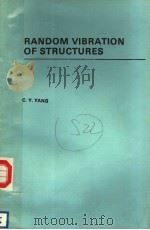
- RANDOM VIBRATION OF STRUCTURES
- JOHN WILEY & SONS
-
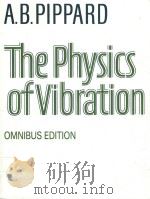
- THE PHYSICS OF VIBRATION
- 1989 CAMBRIDGE UNIVERSITY PRESS
-

- A handbook of International Human Rights Terminology
- 1999 University of Nebraska Press
-

- CRC handbook of dietary fiber in human nutrition 2nd edition
- 1993 CRC Press
-

- CRC Handbook of dietary fiber in human nutrition
- 1986 CRC press
-

- HANDBOOK OF RESEARCH METHODS IN HUMAN MEMORY AND COGNITION
- 1982 ACADEMIC PRESS
-
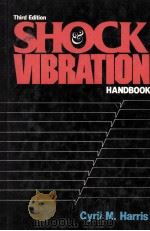
- SHOCK AND VIBRATION HANDBOOK THIRD EDITION
- 1988 McGRAW-HILL BOOK COMPANY
-
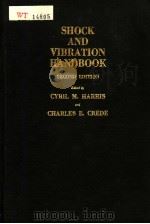
- SHOCK AND VIBRATION HANDBOOK SECOND EDITION
- 1976 MCGRAW-HILL BOOK COMPANY
-
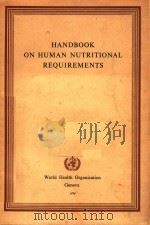
- HANDBOOK OF HUMAN NUTRITIONAL REQUIREMENTS
- 1974 WORLD HEALTH ORGANIZATION
提示:百度云已更名为百度网盘(百度盘),天翼云盘、微盘下载地址……暂未提供。➥ PDF文字可复制化或转WORD
